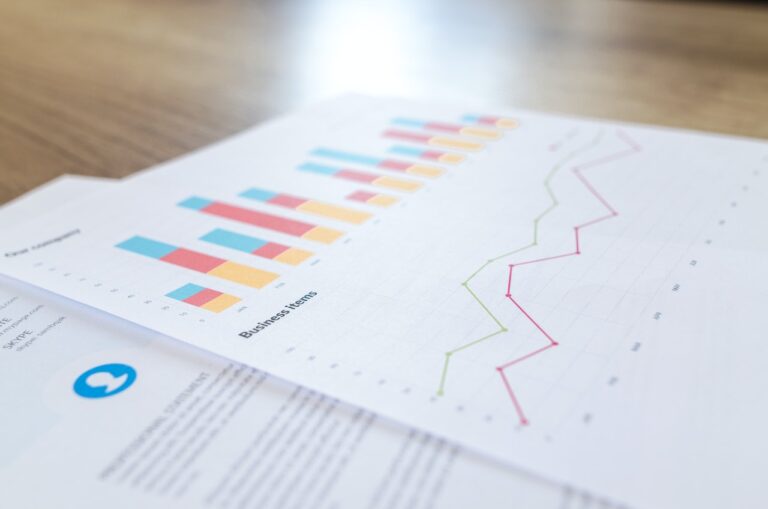If you’re a new business owner, there are many new scenarios that you’ll have to navigate, including how to approach budgeting for small businesses. Anything related to your company’s financial health can be an intimidating topic, especially if you’re new to running your own business. So how are you supposed to navigate finding the right financial information, understand business terminology, and compile the data in the correct order?
This process alone can be enough to scare people away from starting a business altogether. A study suggests that most small business owners don’t have a budget. But with the right approach and financial strategy, you can overcome this hurdle and set your business up for long-term success.
What Is an Operating Budget?
An operating budget is a predicted (forecasted) financial statement of all revenue and expenses during a fixed timeframe such as a quarter or a year. This operating budget is typically divided into categories of revenue for each product that the business sells. In some cases, the operating budget can also be broken down based on the types of expenditures the company makes regarding each product. Most companies take this one step further and break their operating budgets into both fixed and variable costs.
Why Is an Operating Budget Important for Your Small Business?

An operating budget is an integral facet of a small business budget as it outlines essential information on your current financial state and long-term financial goals. Your budget plays an integral role in helping you make financial-related decisions for your business, so it should be one of the first things you establish as a new small business owner.
Here are some reasons to have an operating budget in place:
- Make sound financial decisions for your business: In many ways, your business’ operating budget acts like a financial road map toward success. Business owners refer to it often for an accurate evaluation of where their financial situation currently stands and how it can help them achieve their financial goals in the future. For example, it can show you how to spend the money and estimate how much you expect to make within a certain period.
- Pinpoint where to grow revenue and reduce spending: It can be challenging to make financial-based decisions in a vacuum. However, with an operating budget, you can help determine areas of your business where you need to spend more money and areas that could end up losing you in the long run.
- Obtain additional funding to grow your business further: Many new small businesses apply for a business loan or seek investors to raise additional funds. To achieve either option, you must have a detailed budget outlining your expenses and income.
Key Components of an Operating Budget
To create an operating budget for your small business, you’ll need to outline your expenses, costs, and overall revenue. Closely tracking your business expenses is essential to have the most accurate numbers. In many cases, using some sort of spreadsheet such as Excel helps calculate sums and percentages.
Revenue
Rather than using projected revenue at this stage, you must refer to data from your financial statements. While projected revenue can be helpful, it can also be a distorted reflection of your financial situation because your emotions are involved. While calculating your revenue, don’t worry if you have initial operating expenses higher than what your company is generating in terms of sales. It’s not uncommon for businesses to “burn” cash each month until they break even or reach profitability.
Variable Costs
Variable costs include production supplies, sales commissions, piece labor rates, direct materials, credit card monthly fees, etc. Ideally, you’ll list the actual costs while creating your operating budget to calculate variable cost percentages accurately. As you determine revenue projections, it’s important to understand how your variable costs will change.
Fixed Costs
If you have expenses that don’t change on a monthly basis, these are fixed costs. Examples include phone bills, equipment rentals, insurance, rent, salaries, utilities, etc. To achieve profitability, your fixed and variable costs will only make a small portion of the revenue you achieve. Therefore, having a grasp on your fixed costs is essential to ultimately make money.
How to Create an Operating Budget for Your Small Business

Before we delve into the steps behind creating an operating budget for your small business, it’s important to note that a realistic budget is a goal rather than the conclusion of unrealistic calculations. Therefore, ensure that your budget is easy to understand, is based on facts, and provides value to your business operations.
Step 1: Establish a Sales Budget
Before you establish your operating budget, you must first determine your sales budget. This is a monthly projection of the services and products you will sell and the amount of revenue you’ll earn. If you can project your sales every month, you’ll be able to better account for any seasonal income changes to adjust your spending.
Before you start projecting your sales, you’ll want to list the services or products your business sells in addition to your price points. While you don’t need to factor in every variation, such as different product colors or sizes, you should still assemble an accurate list.
The next step is to go over sales data from the previous year. Keep in mind that budgets are hypothetical, and there is no way to ensure that they will play out with 100% accuracy in the way you predicted. However, reviewing previous financial data can help improve the accuracy of your sales data.
Once you have your old financial statements, use them to project the volume of products or services you sell in a month. When projecting your sales, here are some considerations to keep in mind:
- Your current monthly sales, such as how many ongoing clients you have or how many new customers you have.
- Seasonality of your products or services; when do you have more vs. fewer clients, and what are your highest and lowest earning months?
- Service or product launches that you are planning to incorporate over the next year.
- Marketing campaigns that you will be implementing or any holidays or events that will influence sales.
Another bonus of creating a sales budget is that it acts as a sales plan. Knowing your goals beforehand, you can better assess your progress and tweak your strategy.
Let’s look at an example. Let’s say you are a company selling calendars, and you will make $5,875 in January, $5,325 in February, and $4,950 in March. Even though the total peters out, the company plans to acquire additional clients to replace the income during this drop.
Step 2: Budget Your Costs
The next step is to budget your costs or expenses directly related to selling your services or products. Direct costs are commonly referred to as the cost of goods sold:
- Cost of the materials used to create your product.
- Cost of labor to provide a service.
- Cost of labor that goes into producing a product.
- Cost of merchandise that you resell.
Costs are necessary for you to sell your product or service. However, overhead costs, or operating expenses, aren’t included as they don’t directly relate to your offerings. Instead, they help with your business’s overall functionality, such as keeping the lights on in your factories.
Before you budget your costs for the upcoming year, review your list of products and services and write down their direct costs. Then, add the direct costs for each product or service before you refer to your sales budget. This budget has already been established, so now you simply multiply your projected sales by their costs. There are helpful tools such as a cash flow projection template that can make this process easier.
Step 3: Budget Your Operating Expenses
Ensure you have previous financial data, such as last year’s profit and loss report. Next, list out your expense categories using last year’s report as a guide. Then, you’ll want to identify your fixed and variable expenses for each category. Remember that fixed expenses, such as rent, insurance, and software subscriptions, don’t change over the month or year. Variable expenses, on the other hand, change monthly and are often seasonal. Examples include supplies, marketing costs, wages, one-off software purchases, etc.
Add the recurring costs for each expense category per month, and include annual fixed expenses in the month you make the payment. Regarding variable expenses, estimate your monthly spending, referring to your financial data. You can also use your sales budget and business activities to project this.
For example, you might have higher ad expenses in January and February because you are running a particular ad campaign. In March, you might have a one-off recurring expense if you need to renew your business license. These should all be factored in to determine your total monthly expenses.
Step 4: Plan for Unexpected Expenses

Despite doing your best, there is always a level of unpredictability. Always factor in a line item for unexpected expenses. You can either set aside a particular dollar amount annually and divide it by 12. Add this number to each month for unexpected expenses. You can also increase your monthly expenses by a particular percentage that gives you a cushion. For example, maybe you predict that you’ll have 10% more in unexpected expenses, a number that’s added to your monthly amount.
Let’s say you have $899 in January and expect an additional 10% in unexpected expenses. This means you’d take $899 x 0.10 = $89.90. You’d then take $899 + $89.90 = $988.90 in monthly expenses.
Step 5: Make Budget Adjustments
Look over your budget and determine if it is realistic for your business. Do this by calculating your monthly net income with your revenue minus your costs, expenses, and unexpected expenses. Each month, you need to have enough profit to sustain not only your business but yourself as a business owner. For example, let’s say you need $3,500 monthly to cover your personal expenses in addition to paying down your small business loan. If you run the numbers for one quarter and only one month you’re making enough to meet your needs. Circle back to your budget and make changes.
Step 6: Track Your Budget vs. Actuals
Check your budget regularly to get the most out of it. Determine areas where you are overspending vs. underspending and determine if you’re meeting your revenue goals. You might realize your variable expenses are higher than you originally anticipated. As a result, you’ll reduce your overall spending.
Business Budgets for Different Types of Small Businesses
Even though budgets follow the same structure, there could be some specifics to your industry and business type. For example, maybe you are a seasonal business only open during the summer. Or maybe you know there is a particular time of year that you thrive. Here are some different scenarios to consider. The bottom line is that you shouldn’t expect the same scenarios to play out year after year, and be mindful that forecasting is a dynamic process.
Businesses that Provide Services
If you provide a service such as a law firm or an accounting firm, look at the income, salaries, predicted sales, and consultant costs for budgeting guidance. These budgets need to be flexible because of the wide range of figures. Determine these data points based on how many employees you need to offer the service, how much their time costs, and the demand from your customers.
Businesses that Specialize in Custom Orders

Custom order businesses such as flower shops should factor in the labor time and the cost of supplies, operations, and custom-order items. But, of course, these factors are all different for every order, so the best you can do is make an educated guess.
Businesses that Deal with Inventory
Make sure to factor this into your cost of goods sold if you need to purchase additional inventory to satisfy customer demand. You’ll want to make an educated guess on the amount of inventory you need based on the previous year’s industry benchmarks or sales. Take the time to research ahead, so your vendors are offering you the fairest prices and sending you the right amount to keep up with demand.
How much inventory you have on hand will directly impact your pricing. Ordering more stock might reduce your cost per unit, but your overall total cost will be greater. Don’t forget to consider your budget and pricing as how much you order should not exceed the true demand for the product.
Startups
The budgeting process can be tricky for startups as there isn’t an existing model to copy. Take the time to research industry standards for rent, salaries, and marketing costs. You can also reach out to those in your network to understand professional fees, equipment costs, and benefits. If possible, put money aside for your lawyers, accountants, and advisors. Even if you inject a few thousand dollars from the outset, this could save you tens of thousands of dollars in legal fees or inefficiencies in the future.
Bottom Line
Creating an operating budget is a necessary step for all new small business owners. If you’re unsure where to begin and you’d like hands-on guidance from a seasoned team, don’t hesitate to reach out to us at Cultivate Advisors. Take advantage of our initial phone calls where we can discuss your business and how we can help. We are looking forward to working with you!



